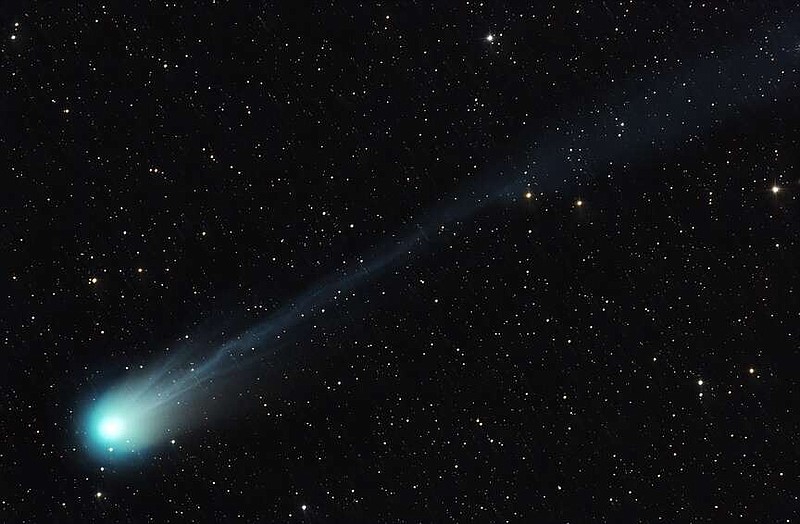It's possible that the corona of the moon-obscured sun will not be the only unusual sight in the sky during Monday's total solar eclipse.
A comet called 12P/Pons-Brooks, which returns to the inner solar system every 71 years, could share the celestial spotlight, according to multiple reports. Some bright stars and planets will also appear as the sky darkens.
Like all comets, Pons-Brooks is an icy body that releases gases as its orbit brings it near the sun. Sunlight illuminating those gases makes comets visible from Earth, sometimes with the naked eye.
"Outbursts observed from Comet 12P give it a horned-like appearance, earning it nicknames such as 'Devil Comet' and 'Millennium Falcon,'" space.com reported.
"During the total eclipse, when the sky darkens, you'll see the brightest planet Venus pop into view on one side of the sun," according to EarthSky.org. "On the other side of the sun, you'll find the second-brightest planet, Jupiter. And if Comet Pons-Brooks is bright enough, you'll see it between Jupiter and the sun, but closer to Jupiter."
The comet's brightness during the eclipse will depend on how active its outgassing is at that time.
"If the comet has one of its dramatic outbursts, that would increase the size of its halo and cause it to appear brighter," according to space.com.
Even if the comet is at its brightest, observers will likely need binoculars or a telescope to see it, according to astronomy.com.

